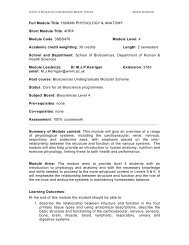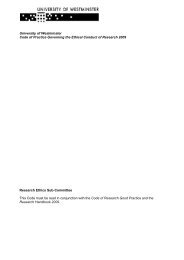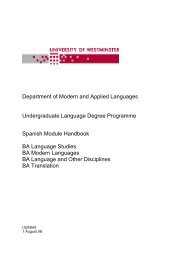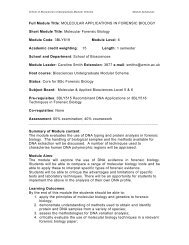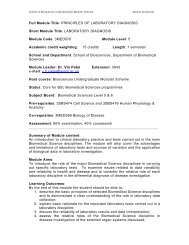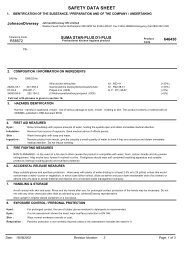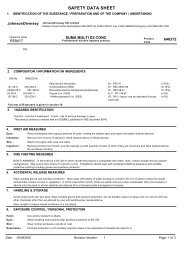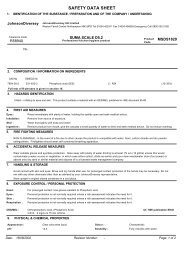CONTENTS 1. Introduction 1.1 Course Outline 1 1.2 Introduction ...
CONTENTS 1. Introduction 1.1 Course Outline 1 1.2 Introduction ...
CONTENTS 1. Introduction 1.1 Course Outline 1 1.2 Introduction ...
You also want an ePaper? Increase the reach of your titles
YUMPU automatically turns print PDFs into web optimized ePapers that Google loves.
• Describe informatively the fundamental mechanisms of colour reproduction systems.<br />
• Evaluate and use analytical developments in colour science.<br />
Practical Skills<br />
• Demonstrate the ability to produce creative imagery that satisfies a commercial brief or<br />
audience.<br />
• Demonstrate skills in the use of colour materials and the production of colour prints.<br />
• Interpret data derived from laboratory observations and measurements in terms of their<br />
significance and the theory underlying them.<br />
• Develop, promote and apply safe systems of work, including the safe handling of<br />
photochemical materials.<br />
• Write simple computer programs in MATLAB language.<br />
Transferable Skills<br />
• Undertake extensive research for the production of dissertations and practical projects.<br />
• Communicate effectively with industry clients.<br />
• Identify and evaluate appropriate strategies for career success and progression in a chosen<br />
field.<br />
• Develop self-awareness in the context of career decision making, knowledge of career<br />
opportunities that are available to them and the skills to make focused applications<br />
• Have the ability to communicate in and understand ideas expressed with a general purpose<br />
portable programming language as use to implement image based operations.<br />
3.3 Year Three<br />
Year three modules are designed to develop students’ knowledge and understanding in more<br />
advanced areas of imaging and photographic science relevant to their chosen career path. A key<br />
aspect of all the modules offered at this level is the aim of encouraging the students to structure<br />
their own learning and develop a more autonomous and independent form of working. A core<br />
element of the third year is a project worth 45 credits, which may be in any area related to<br />
imaging systems, but must contain a high technical content. Supporting this is a project planning<br />
module, aimed at equipping students with the skills to develop and manage their own project.<br />
Year Three Learning Outcomes<br />
At the end of Year Three, (depending on chosen Option subjects) it is expected that students will<br />
be able to:<br />
Knowledge and Understanding<br />
Demonstrate advanced knowledge in key specialisms in photographic science and / or practical<br />
photography, computer graphics and applied imaging, such as:<br />
• Demonstrate knowledge of micro-image evaluation techniques including the modulation<br />
transfer function (MTF), the autocorrelation function, power spectrum of image noise.<br />
• Demonstrate a higher level understanding of digital image processing and manipulation<br />
techniques and their application.<br />
• Understand the main applications and classes of image processing techniques and their<br />
advantages and limitations.<br />
• Understand the principles of advanced colour science and analysis.<br />
• Be familiar with methods of image enhancement and restoration in both real and Fourier<br />
spaces.<br />
• Demonstrate advanced knowledge in computer graphics or visualisation.<br />
• Understand the principles of a variety of image-related business practices.<br />
• Understand the principles of selected applied imaging and techniques in a range of<br />
applications.<br />
DPI_Hbook 13 ©University of Westminster





